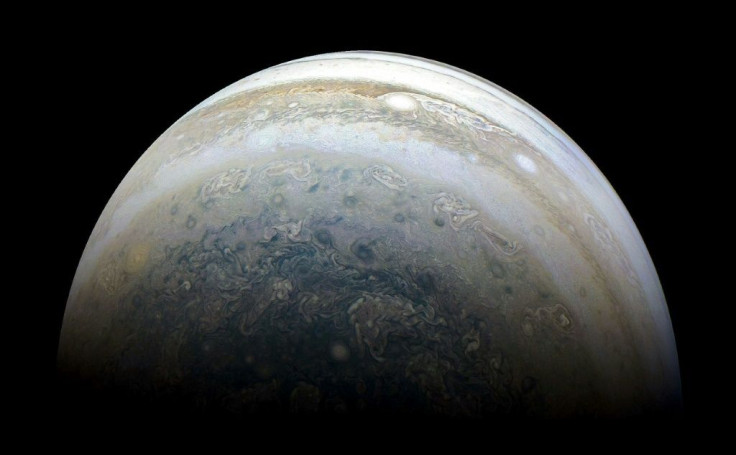Heatwave The Size Of 10 Earths Grips Jupiter, Scientists Find
KEY POINTS
- Heatwave was 130,000 kilometers in size, with extremely hot temperatures of 700 degrees Celsius
- It was traveling at speeds up to 2,400 meters per second from the planet's north pole
- Jupiter has permanent auroras that might be supplying extra energy to warm the planet
A giant heatwave is reportedly speeding across Jupiter's atmosphere.
A research team from Japan Aerospace Exploration Agency (JAXA), studying the heatwave event, which is equivalent to 10 Earths in size, has stumbled upon interesting insights.
The research team found the heatwave on Jupiter was 130,000 kilometers (around 81,000 miles) in size, with extremely hot temperatures of 700 degrees Celsius (1,292 degrees Fahrenheit. The heatwave is said to be traveling at speeds of up to 2,400 meters per second from the planet's north pole toward the equator.
The team presented their study at the Europlanet Science Congress 2022.
The findings might help solve the mystery behind Jupiter's temperatures being much hotter than predicted by models. Estimates suggest the gas giant should have an average temperature of around -73 degrees Celsius (-99 degrees Fahrenheit) in its upper atmosphere. In reality, temperatures hover at around 420 degrees Celsius, which is comparable to Earth's upper atmosphere. The heat is way more than can be explained by solar heating alone.
The answer might lie in auroras. The jovian planet has permanent auroras that might add to the heat by supplying extra energy to warm the planet, along with solar winds.
"Last year we produced ... the first maps of Jupiter's upper atmosphere capable of identifying the dominant heat sources," lead author, James O'Donoghue of the JAXA, said.
"Thanks to these maps, we demonstrated that Jupiter's auroras were a possible mechanism that could explain these temperatures," O'Donoghue added.
There are similarities between auroras on Jupiter and Earth -- both are formed by the interaction of charged particles, magnetic fields, and molecules in the planet's atmosphere.
However, they differ in the fact that auroras on Earth are spontaneous as they depend on an irregular output -- the solar winds, whereas auroras on Jupiter are a permanent fixture. These depend on the particles from one of its moons ,lo, which constantly gives off sulfur dioxide.
The heat maps that were published last year found hotspots directly beneath the auroral oval, suggesting a link between the two.
But then, while studying the auroral oval, scientists came across a solar wind that hit the jovian planet. The solar wind resulted in enhanced auroral heating.
Since hot gas expands, it might be the reason why heat waves are transcending the auroral oval and moving toward the equator at a speed of around thousands of kilometers per hour.
"While the auroras continuously deliver heat to the rest of the planet, these heat wave 'events' represent an additional, significant energy source," O'Donoghue said.
"These findings add to our knowledge of Jupiter's upper-atmospheric weather and climate and are a great help in trying to solve the 'energy crisis' problem that plagues research into the giant planets," O'Donoghue further said.
Not just Jupiter, but other giant planets such as Saturn, Neptune, and Uranus exhibit temperatures hundreds of degrees hotter than solar heating can contribute on its own.
Though these giant planets do not have auroras like that on Jupiter, scientists think their discovery may open up opportunities for solving the heat mysteries on these other planets.

© Copyright IBTimes 2024. All rights reserved.





















